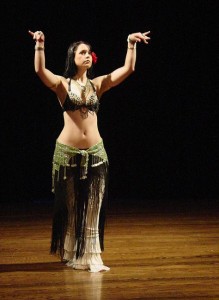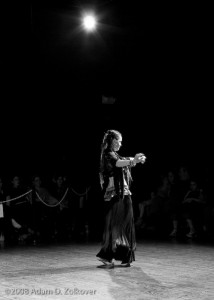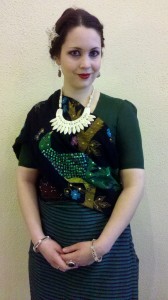As promised, here’s my second post of the month. Hopefully I can continue to publish two posts per month, and perhaps even increase the number as time goes on.
Since I’ve spent the last few days revising a chapter of my dissertation into an article to submit for publication – which involved changing all the citations from MLA to Chicago style, and multiple other tedious rearrangements – I’m going to just write this pots in prose. No citations. Feel free to ask for them in comments if you’re curious.
While I was having a fabulous time at this year’s International Conference on the Fantastic in the Arts, I noticed a trend: people tend to discuss folklore (the topic) as though they know as much about it as someone who has academic training in folklore (the discipline). One of the most obvious manifestations of this was people who mixed up the names of folk narrative genres, like legend and fairy tale and myth, without regard to how they’re used in our discipline. And trust me, we use them quite precisely, distinguishing between their content, contexts, forms, and functions (among other characteristics).
I get that some of these genre terms have entered English vernacular with various meanings (“myth” being one of the most pernicious examples of this phenomenon), but I’d expect scholars to do a bit more research, and use their terminology with more intention and precision. And I get that folkloristics is a small, less-known discipline, so people don’t immediately think to look up our scholarship as examples of how to use genre terms with utmost precision. These are all factors, to be sure.
However, I think there’s something else going on too: I think that we folklorists, in our efforts to reach out to students and colleagues and the general public, have mistakenly placed an emphasis on how folklore is for everyone. If we all know folklore – which we all do, even if we don’t think of it in those terms – then we’re all, in some sense, folklore experts. We’re all the folk after all, right? (to quote my beloved mentor, Alan Dundes) So if we’re all the folk, we all know about folklore, and we all have the right to talk and write about it, right?
Sorta.
On the one hand, I’ve found emphasizing that everyone knows and performs folklore to be an incredibly useful strategy while teaching folklore classes. Once my students know that folklore encompasses all the expressive culture and artistic communication of a given group, and that it’s not just myths and fairy tales, they respond enthusiastically to my in-class discussion prompts. They can rattle off jokes, folkspeech/slang, holiday customs, family stories, personal narratives, folk medicine, and more. All of which is wonderful to witness.
But on the other hand, perhaps we as professional folklorists are mistakenly giving the impression that once a person can identify folklore in her life, she automatically knows enough about it to present or publish about it. Perhaps this is related to the ethnographic impulse in our discipline, where we urge people to describe texts of folklore and relate them to their life and cultural contexts. That’s definitely part of what we want out of folklore scholarship, and if laypeople can get that far, that’s worthwhile, right? But there’s a line between description and analysis, and perhaps that line is getting muddled somewhere.
I’m not sure how we can rectify this misunderstanding, and I suspect that there are deeper cultural forces at work here (such as the dichotomous relationship between orality and literacy and attendant values). I don’t know whether I’m willing to give up the powerful teaching tool that “everyone knows folklore!” has turned out to be, though I’m thoroughly annoyed by every instance where someone (whether a layperson or academic) doesn’t bother to look up our field’s research when referring to our field’s topics.
Suggestions or comments welcome, from folklorists as well as everyone else.
(for what it’s worth, I don’t intend this post to send a negative message to scholars who don’t have a folklore background but are actively interested in working on folklore topics… please just keep in mind that our discipline has a long history – the American Folklore Society was founded before the American Anthropological Association, for instance – and if you really want to do a good job of working with folklore materials, your research must include folkloristic approaches to the topic… and feel free to ask your local folklorist for research suggestions, most of us are happy to help!)




